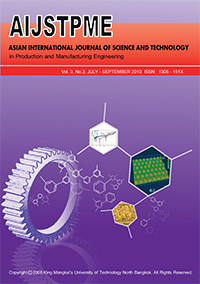Investigation of Diffusible Hydrogen Content and Microstructure Examination of Underwater Welding
Main Article Content
Abstract
Underwater welding is developed for underwater repair applications. This process can be done by two principles, wet welding and dry welding. Wet welding process is designed for welding repair of ship and offshore structure where dry welding process is not possible. However, wet welding process gives low weld quality since it is done in worst welding environment. Hydrogen in water can cause many problems in welds such as severe porosity and hydrogen induced cracking. The objective of this study is to investigate diffusible hydrogen and microstructure in weld metal. Three types of filler metal, E6013, E309-16 and E312-16, are modified in order to be used for underwater welding. Diffusible hydrogen is measured. Microstructure and hardness of weldment are investigated
Article Details
How to Cite
Nakpradit, T., & Poopat, B. (2013). Investigation of Diffusible Hydrogen Content and Microstructure Examination of Underwater Welding. Applied Science and Engineering Progress, 3(3), 45–51. retrieved from https://ph02.tci-thaijo.org/index.php/ijast/article/view/67400
Issue
Section
Technology


